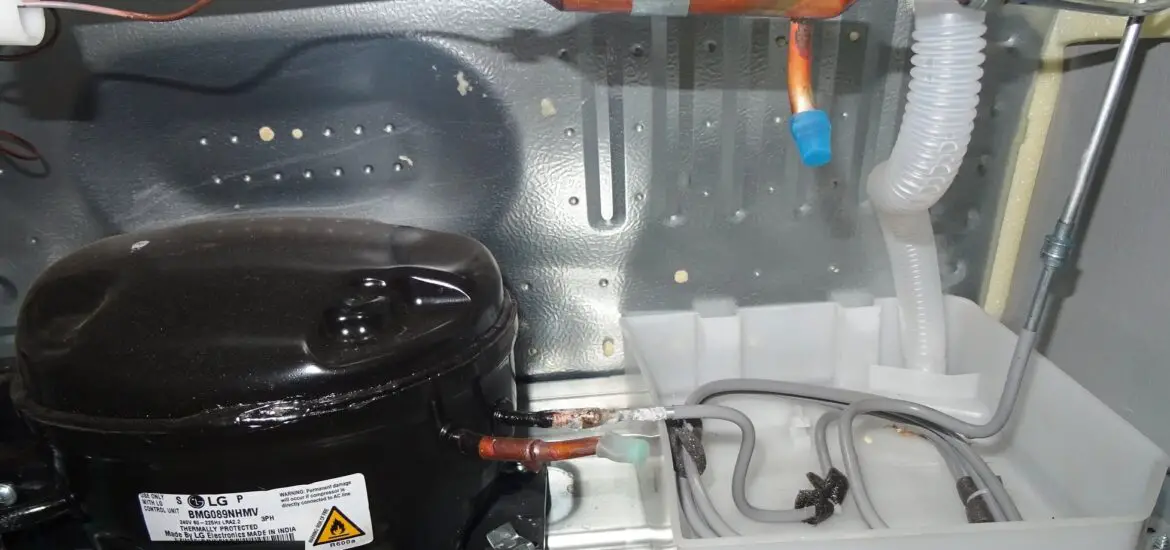If you’ve found a dent in refrigerator compressor and feel clueless about how to tackle it, this guide is designed to help you. By following these detailed steps, you will be able to assess and repair a dent in your refrigerator compressor efficiently.

Table of Contents
Why a Dent in Refrigerator Compressor Matters
Your refrigerator compressor is the heart of the cooling system. A dent may look like a mere aesthetic issue but can actually lead to more severe problems, such as reduced efficiency or even system failure. The more promptly you address it, the better.
Steps to Repair a Dent in Refrigerator Compressor
Follow the steps below to repair a dent in refrigerator compressor:
Step 1: Safety First
Your safety is paramount, and taking precautions is non-negotiable. Start by unplugging the refrigerator from its power source to eliminate any risks of electrical shock. This is crucial because you’ll be working closely with electrical components.
Next, put on safety gloves and goggles. Gloves protect your hands from sharp edges on the compressor or tools. Safety goggles are essential to shield your eyes from any flying debris or accidental splinters during the repair process. Ensure these safety gears fit well and are in good condition to provide the protection you need.
Step 2: Assess the Damage
The compressor is commonly located at the rear bottom side of the refrigerator. To access it, gently pull the fridge away from the wall, ensuring that you don’t tug at any attached tubes or electrical cords.
Examine the compressor for the dent. The size and depth of the dent will determine your next steps.
Shallow dents might be fixable with a DIY approach, but deep or large dents, especially those close to any wiring or tubing, should be evaluated by professionals.
Step 3: Gather Your Tools
You’ll need a few essential tools to fix the dent. These include:
Rubber Mallet: To softly hammer the dent back into place. You can get this Hyper Tough 16 Ounce Rubber Mallet with Wood Handle from Walmart.
Wooden Block: To use as a buffer between the mallet and the compressor, preventing direct impact.
Soft Cloth: To lay over the dent as an additional protective layer.
Straight Edge Ruler: To measure the progress of your repair work.
Ensure these tools are clean and in good working condition before you start.
Step 4: Preparing the Area
Begin by cleaning the compressor’s surface to remove dust, grime, or any foreign particles. This step is crucial for a smooth and effective repair. After cleaning, lay a soft cloth over the dent to prevent any further scratches or damage.
Place your wooden block on top of the cloth. This setup will serve as your work area for the repair, providing layers of protection between your tools and the compressor.
Step 5: Repair the Dent
Hold the rubber mallet in one hand and gently tap on the wooden block covering the dent. The key here is to apply consistent but gentle force. It’s a good idea to tap a few times and then stop to check your progress.
Lift the cloth and wooden block, and use the straight-edge ruler to see how much the dent has leveled out. If it’s not yet fully repaired, put the cloth and block back and continue the gentle hammering. The process may require patience and repeated checking to ensure you don’t over-hammer the area.
Check out these other articles…
Do Refrigerator Compressors Have Oil? Comprehensive Answer
Do Refrigerator Compressors Have a Reset Button? Answered
Refrigerator Compressor Does Not Shut Off: 3 Causes & Fixes
Does a Refrigerator Compressor Make Noise? Detailed Answer
How Does a Compressor Work in a Refrigeration System?
Bad Smell From Refrigerator Compressor: 3 Causes & Fixes
Roaches in Refrigerator Compressor: Proven Elimination Steps
Step 6: Post-Repair Assessment
Once the dent is satisfactorily repaired, plug the refrigerator back into the power outlet and monitor its performance. Pay close attention to any unusual noises from the compressor and whether the fridge returns to its regular cooling capacity.
Any irregularities could signify that the compressor was adversely affected by the dent or the repair process. If this is the case, it’s crucial to consult a professional for further evaluation and possible repair.